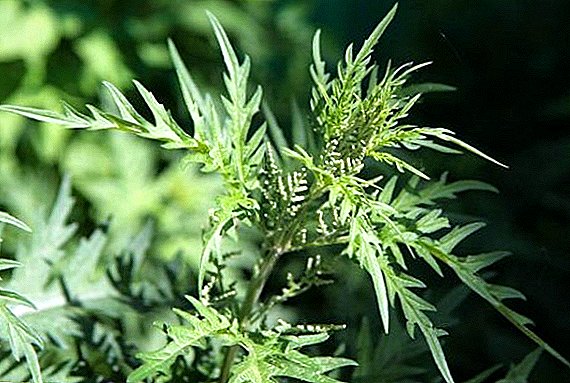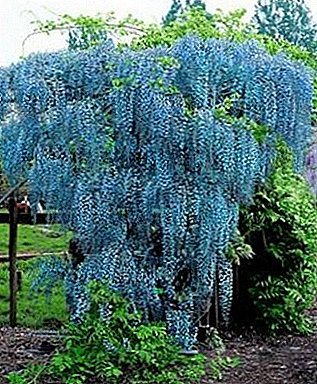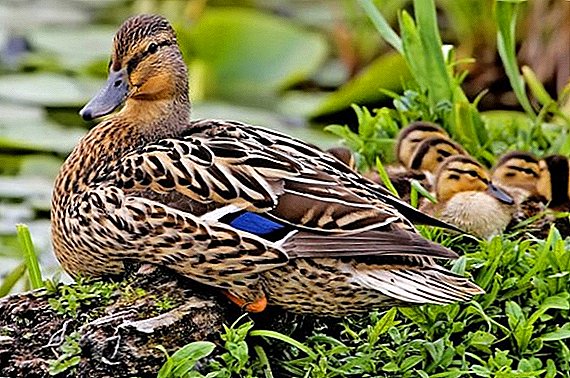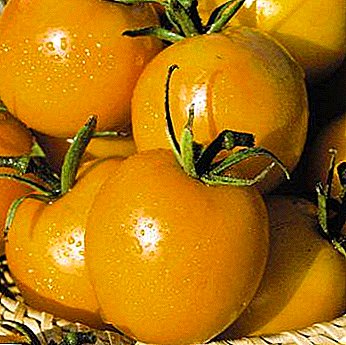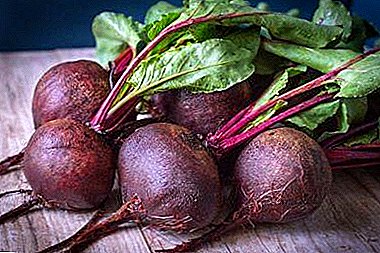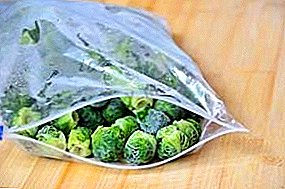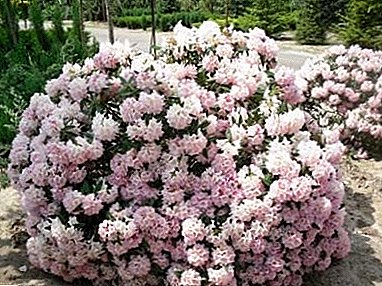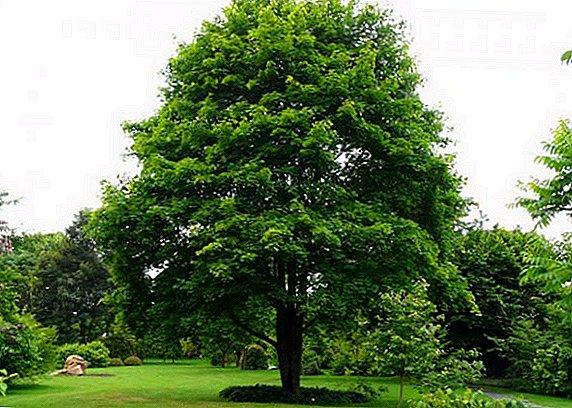 Maple for a long time is on the place of honor among the decorative leafy plants. This is an original tall tree with an unusual crown shape and carved leaves. The technique of growing maple from seeds is practiced not only among professional gardeners, this event does not cause difficulties even for beginners.
Maple for a long time is on the place of honor among the decorative leafy plants. This is an original tall tree with an unusual crown shape and carved leaves. The technique of growing maple from seeds is practiced not only among professional gardeners, this event does not cause difficulties even for beginners.
Can all types of maple be grown from seed
In the world there are about 150 forms of maple. Therefore, initially you need to decide what kind of tree you want to cultivate. Homeland of most varieties is North America. The most valuable variety is sugar maple, found in eastern Canada, as well as in the area of the Great Lavrentyev Lakes.

Most ornamental varieties are propagated by cuttings or by grafting, and only a few varieties are ideal for planting seeds. The exception is American maple, growing and breeding everywhere, however, due to the mass accumulation of parasitic butterflies on it, this tree has been recognized as a quarantine in several countries.
Check out the description of the most popular species of maple, namely: red, Japanese, ash-leaved, Flamingo, Manchu
So, for cultivation by seeds the following types are suitable:
- olfactory;
- Ginnala;
- greenish
- Tatar.




You can easily find maple seeds in the autumn forest in a pile of loose leaves under the trees. In order not to get lost in the search for future material for planting, you need to have an idea about the appearance of the seeds. This is a flat double lionfish. The fruit consists of two parts, each of which is located on one bare grain with a large green bud. Fruiting plant annually and in abundance.
Did you know? Filter out the famous whiskey "Jack Daniels" carried through the charcoal of American maple. This technology is also called the Lincoln process.
Choosing a place on the site
Next you should decide on the site where you plan to plant this amazing plant. The most suitable habitat for maple seedlings are open sunny areas. In the absence of an illuminated area in the first years of maple life, light partial shade is permissible.

As for the soil, it is preferable that it be fertile and loose. Therefore, before planting the soil should be loosened, making it homogeneous. In addition, it is recommended to fertilize garden soil with a small amount of a mixture of sand, peat and humus.
Throughout the season, such perennial plants will delight you with continuous decorativeness: host, Badan, astilba, geykher, hellebore, stonecrop, viola, tradescantia.
If ground water flows near your garden plot, then a 10-20 cm drainage layer of sand should be laid on the bottom of the landing pit, rubble or expanded clay with a thickness of about 15 cm. Drainage will significantly improve the flow of waste liquid.

Seed stratification
Under natural conditions, maple seeds ripen in August, fall in the fall, and begin to spring in the spring. Based on these natural cycles, it is necessary to carry out stratification. Consider the nuances of cold and combined techniques.
Read about the use of maple and maple sap in traditional medicine.
Cold
Stratification Procedure ("stratification") allows you to achieve rapid germination of planting materials. The meaning of the cold method is to maintain the hibernation phase in an unnatural environment, after which the plant in nature begins to grow actively. The method is suitable for most varieties of maple. American, Norwegian, Japanese, large-leaved, sugar and some red species hibernate in winter, and with the advent of heat they give rise to shoots.

All the above varieties of grain are placed in the ground in autumn or in December. If your tree has a lionfish in the spring or June, germination should be carried out in the ground. If you plan to sow grain in the open field, use the cold method for 90-120 days before the retreat of extreme cold.
Near the maple you can plant chestnut, rowan, pine, spruce and ornamental shrubs.
So, proceed to the cold "delamination":
- Put a handful of peat moss and vermiculite into small plastic bags of zipper. To prevent the penetration of the fungus, do it in disposable gloves and use only sterile clean material.
- To dampen planting material a little, pour in a few drops of water.
- If you wish, you can add some fungicide. This will protect the seeds from mold damage. To prevent seedlings from being affected by an overdose of a fungicide, add very little of this substance.
- Spread the seeds into packets (20-30 samples each). In order to maximize the removal of air from the package, carefully smooth it with palms. Carefully seal the bags.
- We have arrived at the time of direct stratification of the seeds. To this end, the seeds must be kept in a refrigerator at a temperature of 1-5 ° C. It is this temperature that promotes the germination of seeds of most species.
- Every 8-15 days, check the bags for condensate, mold or other undesirable effects.
- Keep bags in the refrigerator for 40-120 days. For germination of most varieties takes from 90 to 120 days. The term germination of seeds for 40 days is a rarity - it is peculiar only to large-leaved and some other forms.
- As soon as the grains begin to germinate, remove the bags from the refrigerator.







Important! If condensation is found in the bag with the planting material, lightly push it down to allow the liquid droplets to flow out. Carefully remove the bag on the opposite side and allow the wet grains to dry. If the grains, on the contrary, are dry, add 1-2 drops of water to the bag. And having seen any signs of molding, select and recycle affected lionfish.
Warm and cold
For grains that are particularly hard to germinate, a combined (warm and cold) "exfoliation" method is used. The essence of the method lies in the impact on planting material alternately warm and low temperatures. This technology is required mountain and Asian varieties. Paper, curled and striped varieties hardly emerge and need extra care. This applies to most other varieties from Asia, as well as rocky and mountain trees. All grains of this group ripen in the autumn or winter season. Simply remaining in the ground, the seeds can germinate only after years.

Many of these varieties have a very rigid pericarp (shell) that requires some processing. Professional gardeners often make "cuts" on the pericarp, which significantly enhances the growth of shoots. Processing the base of the seed (opposite the wing) with a small file will also help (stop immediately, as soon as you reach the base, slightly opening the shell). In addition, it is practiced to soak the planting materials in hydrogen peroxide for several hours, after which they are well washed. Or you can soak the lionfish in the warm water for a day.
Read how to grow a home maple (abutilon).
To further soften the dense shell and awaken the embryo, soak the seeds for one or two months in a warm room (at a temperature of 20-30 ºC). Inaccuracies in the timing associated with the lack of thoroughly studied data on the seeds of each specific type of maple.

Next, subject the grain to cold "delamination". To do this, the planting material must be packaged in plastic bags with zipper (about 20 winged fish in each), making a small handful of peat moss or other top dressing that promotes germination. Transfer the packages to the refrigerator. Every two weeks, inspect the packages so that there are no signs of mold or desiccation inside.

Most varieties require a minimum of 90 and a maximum of 180 days to germinate.
Important! Do not expect that each seed will be able to germinate. Practice shows that germinates only 20% of the krylatok.
Seed germination in soil
You can start to grow seedlings from seeds in a tray indoors or plant them outside after the retreating frost.
If you want to protect the plant from possible natural troubles, find out why you need to mulch the soil.
In room
In an unnatural environment (indoors), the grains are planted in trays to a depth of 2-3 cm with wings up. If in the future you do not expect to transplant young plants, then you need to keep a distance of at least two meters between the seedlings. However, it is still preferable to plant the lionfish at a closer distance - you will have the opportunity to select the best specimens and plant them outdoors. Planted grains need to be watered. In the future, make sure that the soil was constantly slightly wet.

Shoots should appear within 14-20 days from the moment of planting. Keep in mind that maple grows relatively slowly: by September, the height of the shoot will be 20-40 cm, and for the first year of life a young plant can stretch up to 50-80 cm in height.
Did you know? Maple Leaf on the flag of Canada means the unity of the nation. Originally, the maple leaf symbolized all the children of emigrants.
On the street
Practiced and this method of seed germination of seeds, in which they are planted outdoors in the autumn. In this case, the seeds of the entire winter season are in the close natural environment, and in spring they begin to germinate. However, due to severe frosts or snowless winter, the germination of planting material here will be somewhat lower.

Depending on the size of the seedlings, they can be transplanted to a permanent place after 1-3 years. When planting single seedlings, the distance between them should be 2-4 meters. If you plant a hedge, the distance can be reduced to 1.5-2 meters.
For the formation of a hedge fit such plants as: white turf, calinifolia, aronia, spirey, lilac.
Planting takes place in pre-dug pits about 70 cm deep and at least half a meter wide. The composition of the soil should be similar to the substrate that was used for germination of the grains. It is preferable to add organic fertilizer to the soil, for example, compost or humus.

At the bottom of the pit pour the substrate in the form of a hill, on top of "sit down" seedling, straightening its roots. Then pour soil in such a way that the root neck is located no deeper than 5 cm under the soil.

After seed germination, further care of the seedlings is not particularly difficult.
To improve the maple and direct its growth in the right direction, find out all the features of pruning in spring, autumn and summer.
Further care
Although the maple tree is considered an unpretentious crop, young plants still need attention and some care. Care is in timely irrigation and fertilization of the soil, ridding the young tree of weed beds and in a number of other procedures.

Important! In order to eliminate any obstacles to the supply of water or air to the rhizome, from time to time, carefully weed weeds and loosen the soil in the forest zone.
This culture easily endures the rainless, but for the beauty and brightness of the shade of foliage it must be systematically watered. Irrigate the tree rarely, but intensively, so that the soil does not dry out. On hot summer days, about 2-3 buckets of water should be poured under each seedling and young bush. In the autumn and spring seasons, irrigation can be carried out less frequently - about once a month.
If in the process of planting you did not apply fertilizer or their concentration was poor, then in March-April of the next year it is necessary to feed the bushes with superphosphate, potassium salt and urea.
In the summer, fertilize the plant with the Kemira Universal wagon. (100 g per 1 square meter) or any other complex top dressing intended for perennial crops.

In hot summer, young maple trees preferably pritenyat that will help protect the crown from the direct burning rays of the sun.
The most common maple disease is powdery mildew. In order to get rid of it, the tree can be sprayed with fungicides; Topaz and Fundazol are considered the most effective.
Maple maintenance also includes the removal of dried and diseased branches. With the arrival of premature frosts, cut off annual branches (thanks to young shoots, the crown will be able to recover on its own, and the branches themselves will have time to get stronger and endure low temperatures).

Until the moment when the first frosts strike, young trees should be wrapped in the area of the rhizome with branches of coniferous trees or other covering material. When the bushes grow a little, they will no longer need shelter and will be easier to tolerate the vagaries of nature.
Did you know? In some regions of Japan Maple leavesroasted In oil, serve popular snack food The leaves collected from a tree insist about a year in salt barrels. The final stage is to cover the leaves with a sweet dough, prepared according to a special recipe, and roast deep fried.
As you can see, maple - this is a simple tree in the care, which you can sprout on your own garden plot. Maple is especially beautiful in the fall, when its foliage is transformed into yellow and dark red shades. Timely carry out all the required care procedures, and a grateful tree will grow well and branch.
Reviews from the network:




